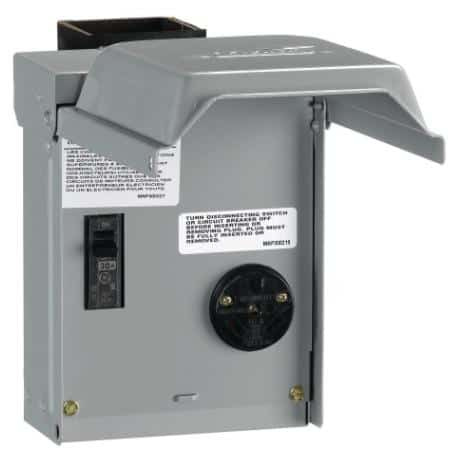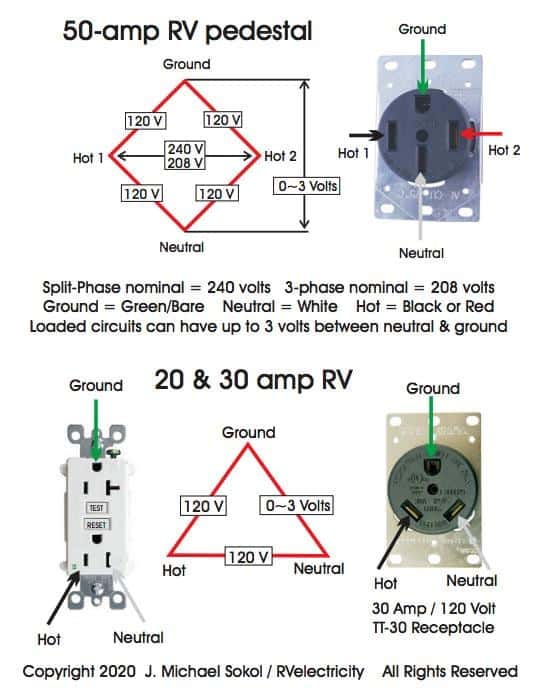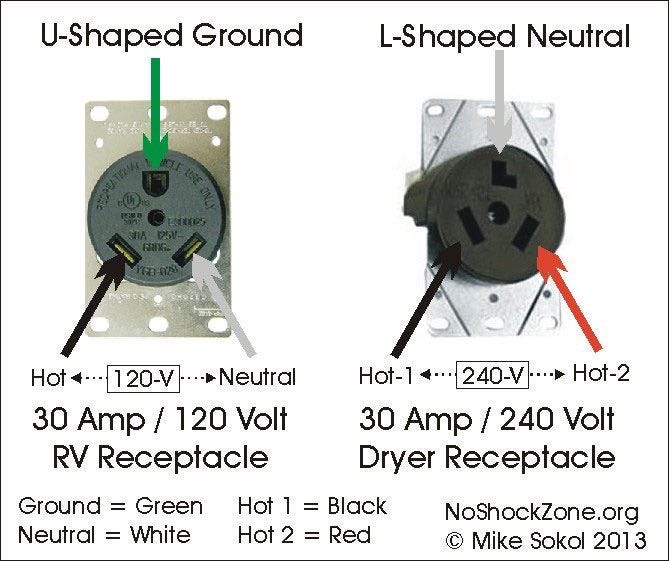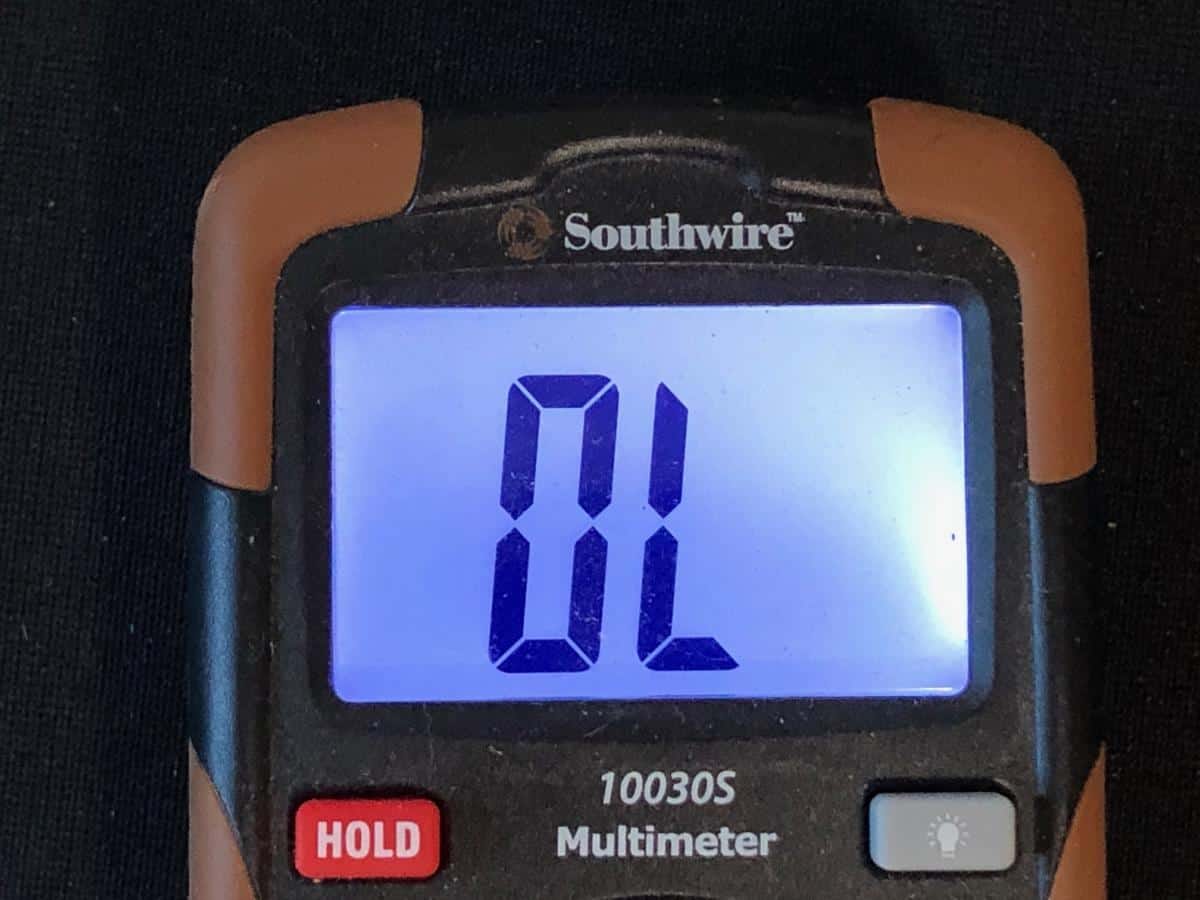J.A.M. Session: How to measure 120 volts
Measuring anything correctly depends on setting your meter properly!
Welcome to my J.A.M. (Just Ask Mike) Session, a weekly column where I answer your basic electrical questions. If you’re a newbie who’s never plugged in a shore power cord (or ask – what’s a shore power cord?), or wonder why your daughter’s hair dryer keeps tripping the circuit breaker, this column is for you. Send your questions to Mike Sokol at mike (at) noshockzone.org with the subject line – JAM. This week I explain how to set a volt meter to check outlet voltage.
Dear Mike,
I just bought a cheap meter and want to know how to set it to check my outlet voltage. I’m paying an electrician to hook up a 30-amp outlet on my house. But I’m a little paranoid to plug my trailer into it without checking first.
I asked the guy at the store and he said to set my meter to the ~200V AC scale and and that would work. Is he correct? —Diane
Dear Diane,
First of all, it’s not a good idea to take electrical advice from a guy in a big box store. Some of them will know the correct answer, but many of them will not. So let’s look at the basics.
You may have seen this diamond voltage chart on the dozens of articles I’ve written over the last 10 years. U.S. residential and campground power is typically 240/120 volts.
That is, if you measure between the two hot legs of the 50-amp outlet, you should see a nominal 240 volts. If you measure from neutral to either hot leg you would measure a nominal 120 volts. All good so far?
For a 30-amp outlet, you should measure around 120 volts from the hot leg to neutral. You should never measure 240 volts. That would indicate that your electrician thought this was a clothes dryer outlet and made a huge wiring mistake.
Volt meter settings
Now, if you were to set your meter to the 200-volt AC range and measure 120 volts, then all is well. That’s because you’ve told the meter that you don’t expect anything more than 200 volts, so it faithfully indicates 120 volts.
Note that you do have to set it to the AC scale (usually a squiggly line) and make sure your meter probes are plugged in the common (black) and V/Ohm (red) inputs.If you accidentally set your meter to DC volts or plug the probes in the wrong jacks, your meter might read 0 volts when there’s real AC voltage present.
Danger, Will Robinson!
But what happens if you have your meter set on the 200-volt scale and encounter 240 volts either on a properly wired 50-amp outlet or a dangerously miswired 30-amp outlet? Well, the meter won’t be harmed, but the display will normally indicate an OL, for Over-Limit.
If you’re used to reading a meter you’ll probably know that you exceeded the voltage range. But if you’re not used to meter reading, you may not realize that your electrician accidentally wired up your 30-amp outlet with 2-pole 240 volts, instead of 1-pole 120 volts. Either way, it can be confusing.
Set it to 600 Volts AC….
So that’s why I recommend you always set a multi-meter to the next highest scale above 240 volts, with 400-volt and 600-volt ranges being common. And always set your meter to the proper range before you touch the meter probes to any circuit.
Make sure you don’t have the Hold button pushed, which will lock the meter to display 0 or 120 or 240 volts, even after you removed the probes from the circuit.
OK, everyone. Remember that electricity is a useful and powerful force, so we all need to pay attention to safety precautions while using it.
Let’s play safe out there….Mike










Great article! I really like the fact that this guy is wanting to understand and fix things himself. Also that he is coming to a great resource! Thanks Mike for all you do!